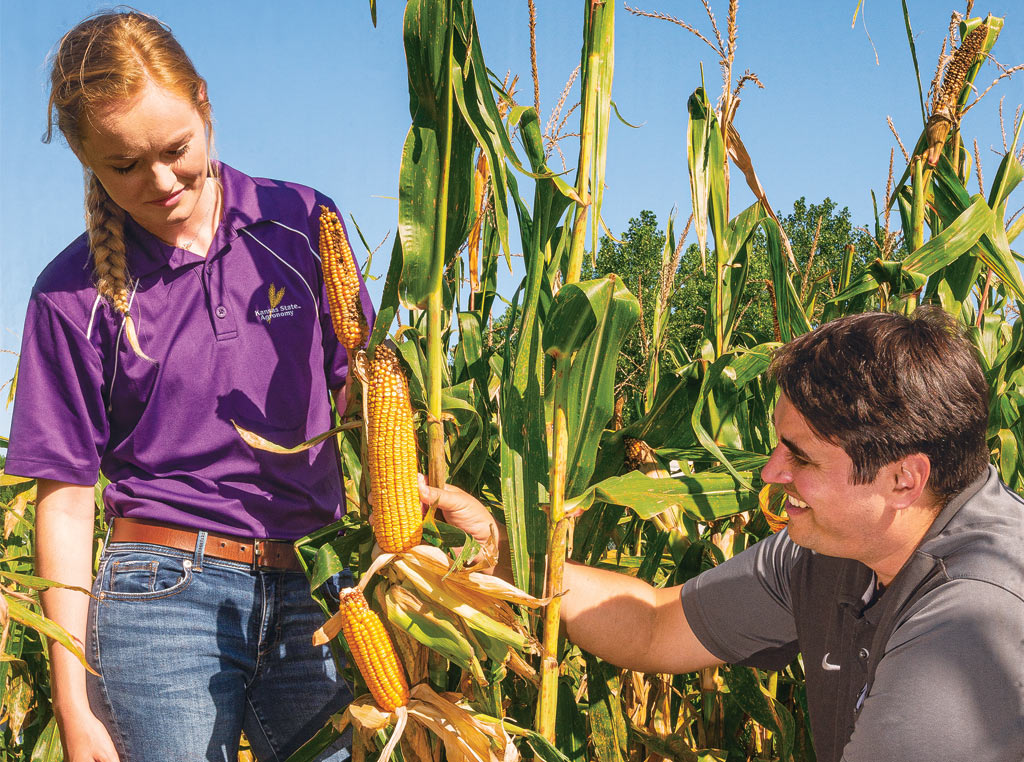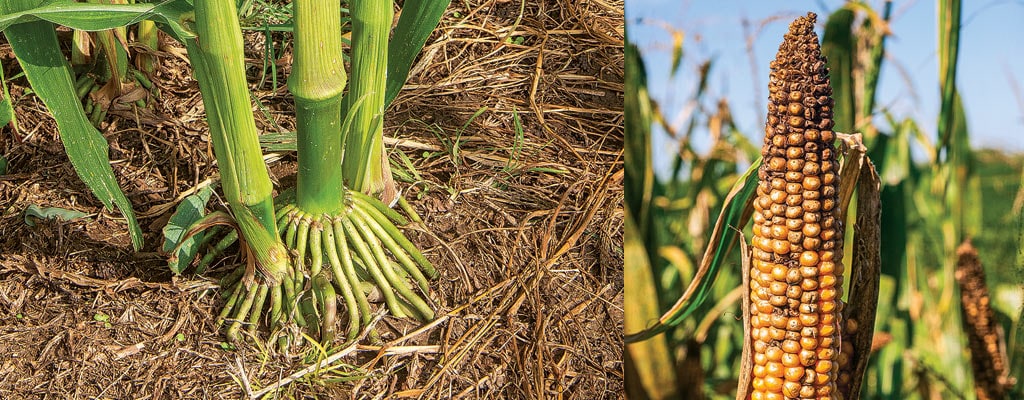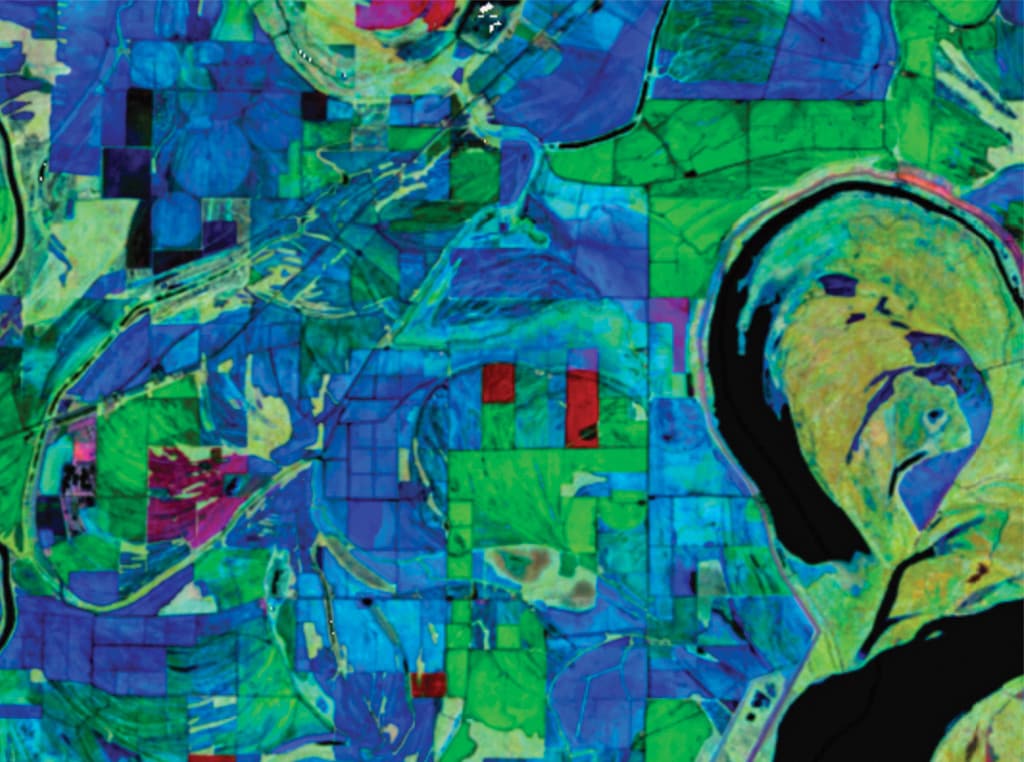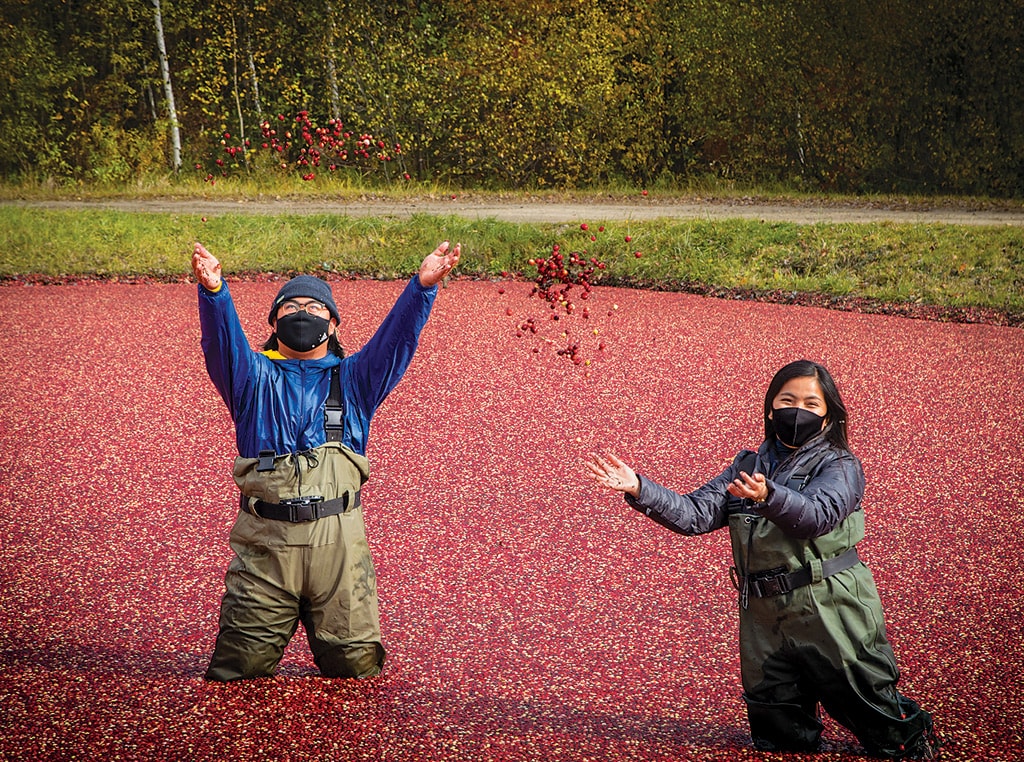
Rachel Veenstra (left) is working with KSU agronomist Ignacio Ciampitti to study tillering in corn.
Agriculture, Education March 01, 2021
Taking Stock of Tillers
Corn tillers aren’t really suckers at all.
Corn tillers are getting a bad rap. In a misnomer that likely goes back to when four-legged horsepower was used to pull the cultivator, corn tillers are commonly referred to as suckers. That unsavory handle conflicts with the fact that tillers can actually add to crop yields in many situations. It’s an injustice that new research hopes to change.
‘“Historically, tillers in corn have been viewed negatively by farmers, agronomists and crop breeders,” says Ignacio Ciampitti, cropping systems specialist at Kansas State University. “However, modern corn hybrids show the potential to develop tillers that actually boost yields, especially in fields where plant populations are lower than optimum. Our research goal is to create a better understanding of the impact tillering can have in these situations.”
Under Ciampitti’s guidance, graduate research assistant Rachel Veenstra is working to quantify the impact tillers have when plant stands are thin—either because of intentionally low seeding rates or because of crop damage.
“The limited research that’s available indicates that situations with low population are where tillers will most likely be beneficial and that’s the common practice in water-deficit areas of central and western Kansas,” says Veenstra.
The last two years Veenstra has compared the yield of two commonly grown hybrids at nine locations when tillers were maintained and when removed. The hybrids, which were prone to produce tillers, were grown at 10,000, 17,000 and 24,000 plants per acre. “In the water-limited environments where we’ve tested, tillers have significantly flattened the yield curve of our selected hybrids with regard to plant population. In the best cases, our plots with the lowest population (10,000 plants per acre) with the tillers maintained have competed with plots having over twice the population with tillers removed,” says Veenstra.
“In all our trials, tillers have never lowered yields when compared to plants with tillers removed early in the season. This includes plots where the main stalks put on a second ear,” she adds.
Veenstra explains that tillers were not able to overcome population differences across all her research sites. “The contribution tillers make seems to depend on the availability of resources—such as water, solar radiation, temperature and crop nutrients—when tillers are developed, which is usually when main stalks have three to six leaves.”
The KSU Department of Agronomy, the Kansas Corn Commission and Corteva Agriscience are also participating in the research. The latter’s Paul Carter, former agronomy manager with Pioneer, has a similar view of tillers in corn.
“Tillers are often called suckers, insinuating that they draw nutrients from the main plant and have a negative impact, but research shows that’s not the case,” says Carter. “In fact, studies show a substantial amount of sugar developed through photosynthesis in the leaves of tillers moves to the main plant.”
Carter adds tillers can add to yields if plant populations are low for the season’s growing conditions or if there are gaps in the plant stand. “If those situations don’t exist then any tillers that form will be shaded out and fade away.”
Topic of debate. Ross Kooiker, who farms near George, Iowa, has seen tillers prove their worth on several occasions. “We have some lighter ground that we plant a relatively low population on, but if we end up having a really good year that corn tillers like crazy. This helps to make up for the opportunity we missed by not using a higher seeding rate, but of course you never know the weather ahead of time,” he says.
“We’ve seen tillers have full-sized ears and it’s amazing how much that adds to yield, but even if they don’t develop an ear they still give a boost to the main stalk. That’s the only way we can explain areas with those sandy soils yielding nearly 300 bushels per acre with a planting rate of just 24,000,” adds Kooiker.
One aspect the KSU researchers hope to better understand is why tillers sometimes form a normal ‘lateral ear’, sometimes a ‘tassel ear’ and sometimes no ear at all. “Tassel ears are a result of a failure in tassel development early in the season. This issue results in a partial tassel and partial ear that emerges from the top of the tiller. This can happen on the main stalk as well, but is more common on tillers,” says Ciampitti.
Ciampitti, explains that tassel ears are undesirable because there is no husk, so any grain on them is exposed to the weather, insects and other forms of damage. “Tassel ears rarely remain on the plant until harvest.”
“Unfortunately, the type of ear that tillers are going to develop is not evident until silking. Understanding this relationship earlier in the season is a focus of our research,” he adds.

Corn plants are more likely to form tillers where plant density is low and growing conditions favorable. Tassel ears (right) are physiological abnormalities that sometimes occur on tillers.
Read More

Agriculture, Ag Tech
Ag Data Is Beautiful
Digital sattellite data paints farm masterpieces.

Agriculture, Specialty/Niche
Year-round Tourism
Muskoka farm develops innovative ways to incorporate four-season tourism attractions.
